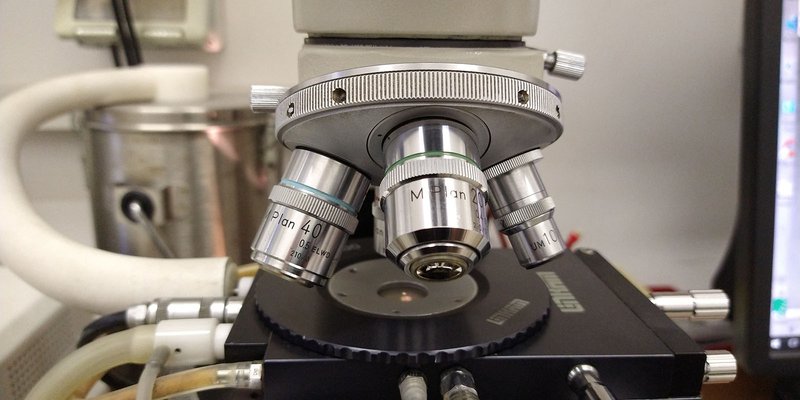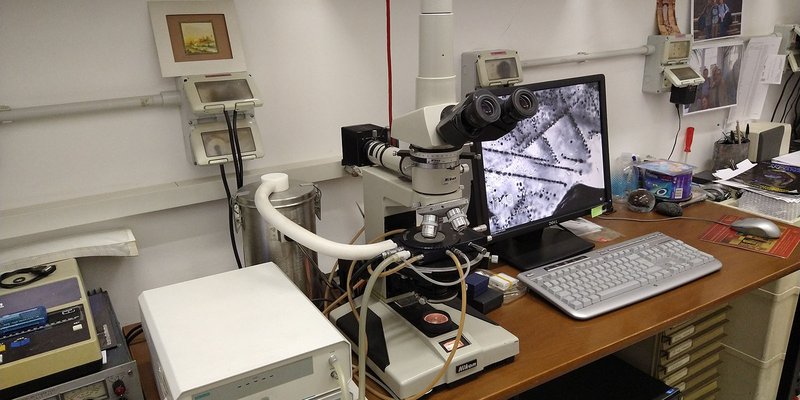Fluid inclusions laboratory has been set up in 1984, and it is still operative since then.
Originally an USGS-type gas-flow heating-freezing stage was adapted to a Leitz Laborlux 12 POL microscope, until in the early ‘90s the lab was equipped also with a ChaixMeca stage. The stage was adapted to the Leitz Laborlux 12 POL Microscope with 2 long-distance lens objectives, 20 and 32x.
Starting from 1997 a Linkam stage THMSG600 equipped with LNP and TP93 is the operating stage in the lab. It is adapted to a Nikon microscope Optiphot-pol, on which 4 long-distance lens objectives ( 5, 10, 20, 40x) are mounted. The stage is linked to a PC HP Pavilion through a videocamera.
The lab is also equipped with 4 lapping machines for the polishing of the thick sections as required for fluid inclusion analysis. Fluid inclusions laboratory is specialized in fluid inclusion analysis, an important part of an integrated study of most geological investigations.
Fluid inclusions are small volumes of fluid that remains trapped in the crystal lattice during growth or filling later fractures that occur within or cutting the mineral edges. They represent very useful and sometimes only records of the circulating fluids that interacted with the earth’s crust and upper mantle over geological time and during geological processes. Fluid inclusion research helps to elucidate the role of fluid phases in sedimentary, diagenetic, metamorphic and magmatic processes. Fluid inclusions are treated as essentially isochoric (constant volume) systems which are defined by pressure (P), temperature (T), volume (V) and chemical composition (X). Microthermometry is the method through which phase transitions are observed and detected during freezing and then heating of the entrapped fluids.
Microthermometric data (Te, Tm, Th) permit to obtain the pressure- temperature conditions of the fluid at the circulating time or later during healing of fracturing events. Moreover, microthermometric data give indications about the composition and the salinity of the trapped fluid. Finally, the aim of fluid inclusion studies is to obtain PTVX parameters of the fluids that formed or passed through the rock and that help to understand rocks history. Fluid inclusion studies can be applied to all different kinds of geological processes from petroleum to geothermal exploration, from lunar and meteorites investigation to evaluation of sites for waste disposal, from gemmology to paleoclimatology, to tectonic reconstructions of terranes.


